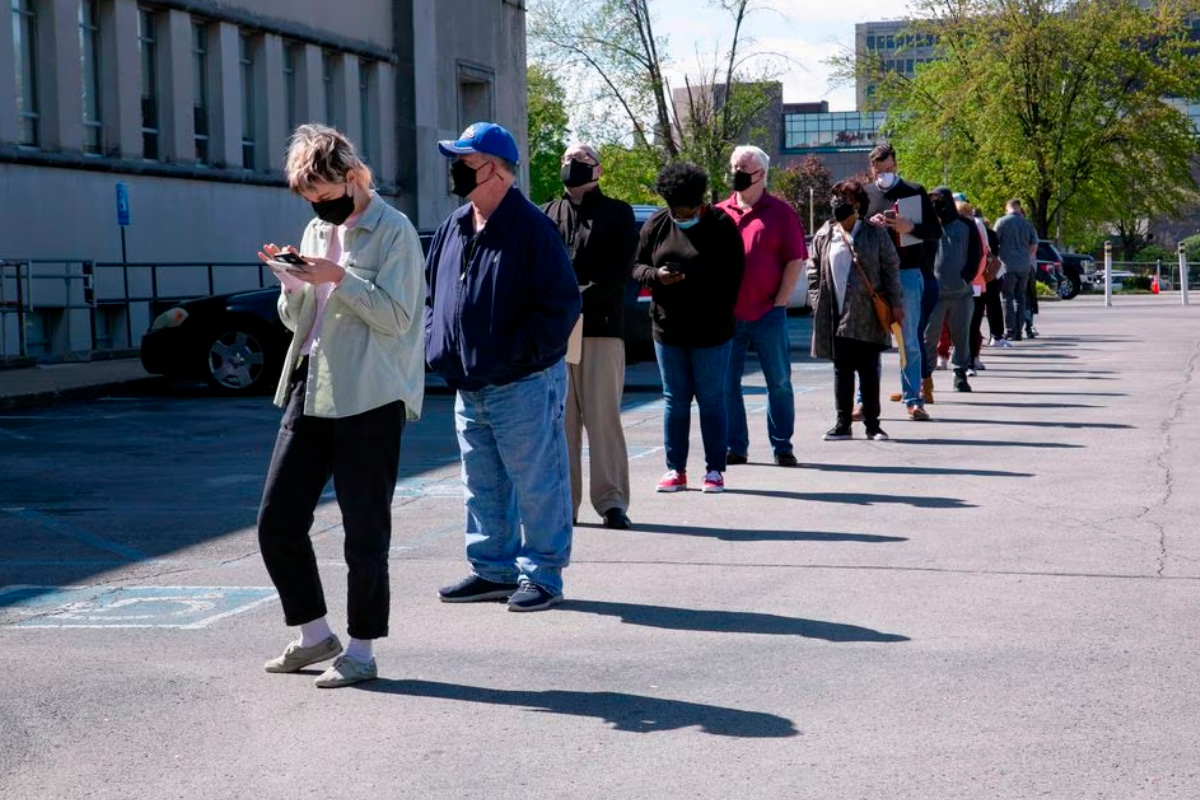The number of Americans filing new claims for unemployment benefits fell last week by the most in 20 months, the latest sign of the economy’s resilience that could push the Federal Reserve to resume raising interest rates in July.
The unexpected decline in applications reported by the Labor Department on Thursday reversed a recent jump, which had left initial jobless claims over the prior three weeks hovering at levels last seen in October 2021. The elevated readings had led some economists to conclude that layoffs were picking up as the economy begins to feel the heat from the Fed’s hefty rate hikes.
Persistent labor market strength is helping the economy to defy predictions of a recession by boosting wages. The economy grew faster than previously estimated in the first quarter, other data showed on Thursday, thanks to robust consumer spending. It appears to have maintained the momentum in the second quarter, with reports this month showing better-than-expected employment growth in May as well as retail sales gains and a surge in housing starts.
“The economy is currently displaying genuine signs of resilience,” said Gregory Daco, chief economist at EY-Parthenon in New York. “This is leading many to rightly question whether the long-forecast recession is truly inevitable, or whether a soft landing of the economy is possible.”
Initial claims for state unemployment benefits decreased 26,000 to a seasonally adjusted 239,000 for the week ended June 24. The drop was the largest since October 2021.
Economists polled by Reuters had forecast 265,000 claims for the latest week.
Recent policy changes in Minnesota making tens of thousands of hourly paid school workers eligible for state unemployment benefits during the summer break accounted for some of the increase in claims in the first three weeks of June. Suspected fraud in Ohio was also another factor.
Unadjusted claims dropped 17,843 to 233,048 last week. Claims tumbled 10,108 in California and plunged 9,187 in Texas. They dropped 3,263 in Pennsylvania, while Minnesota reported a 2,387 decline. These decreases offset a 6,013 surge in Connecticut and a 5,206 jump in New Jersey.
Claims could become volatile in July, when automakers typically idle plants to retool for new models. But these temporary plant closures do not always happen around the same time, which could throw off the model that the government uses to strip out seasonal fluctuations from the data.
Claims, relative to the size of the labor market, are well below the 280,000 level that some economists say would signal a significant slowdown in job growth. Employment growth has averaged 314,000 jobs per month this year.
“For now, there is no sign of a substantial deterioration in demand for workers,” said Rubeela Farooqi, chief U.S. economist at High Frequency Economics in White Plains, New York.
Financial markets have almost fully priced in a 25 basis points rate hike at the Fed’s July 25-26 policy meeting, according to the CME Group’s FedWatch Tool.
Fed Chair Jerome Powell said at an event hosted by the Spanish central bank in Madrid on Thursday that “we expect the moderate pace of interest rate decisions to continue,” after pausing in June.
U.S. Treasury yields rose. The dollar gained versus a basket of currencies. Stocks on Wall Street were trading higher.

FIRST-QUARTER GDP REVISED UP
The number of people receiving benefits after an initial week of aid, a proxy for hiring, fell 19,000 to 1.742 million during the week ending June 17, the lowest level since February, the claims report showed. The historically low so-called continuing claims indicate that some laid-off workers were experiencing shorter spells of unemployment.
A survey from the Conference Board this week showed consumers’ perceptions of the labor market were upbeat in June, with more viewing jobs as “plentiful” relative to May.
Continuing claims covered the period during which the government surveyed households for June’s unemployment rate. Continuing claims fell between the May and June survey periods. The unemployment rate was at 3.7% in May.
Higher wages from the tight labor market spurred consumer spending in the first quarter, offseting the drag from a sharp slowdown in the pace of inventory investment by businesses.
Gross domestic product increased at a 2.0% annualized rate last quarter, the Commerce Department said in its third estimate of first-quarter GDP on Thursday.
The upward revision from the 1.3% pace reported last month reflected upgrades to consumer spending and exports. The economy grew at a 2.6% pace in the fourth quarter.

Economists had expected first-quarter GDP growth would be raised slightly to a 1.4% pace.
Fifteen industries, including healthcare and social assistance, retail trade, agriculture, real estate and rental and leasing as well as accommodation and food services contributed to GDP growth last quarter.
But seven industries, including finance and insurance, manufacturing and wholesale trade were a drag.

While corporate profits dropped for a third straight quarter, the decline in the first quarter was not a steep as initially estimated. After-tax profits without inventory valuation and capital consumption adjustment, which correspond to S&P 500 profits, decreased at a 1.2% rate instead of the previously estimated 2.1% pace.
As a result, economic output contracted at a 1.8% rate when measured from the income side. Gross domestic income (GDI) was initially estimated to have declined at a 2.3% pace in the first quarter. GDP and GDI should be equal, but differ as they are estimated using different and largely independent source data.
The average of GDP and GDI, also referred to as gross domestic output and considered a better measure of economic activity, edged up at a 0.1% pace last quarter instead of falling at a 0.5% rate as previously reported. Economists expected GDI would be revised towards GDP when the government revises the data later this year.
“While the economy will struggle in response to the Fed’s actions … slow growth will bring down inflation without precipitating a recession,” said Scott Hoyt, a senior economist at Moody’s Analytics in West Chester, Pennsylvania.







